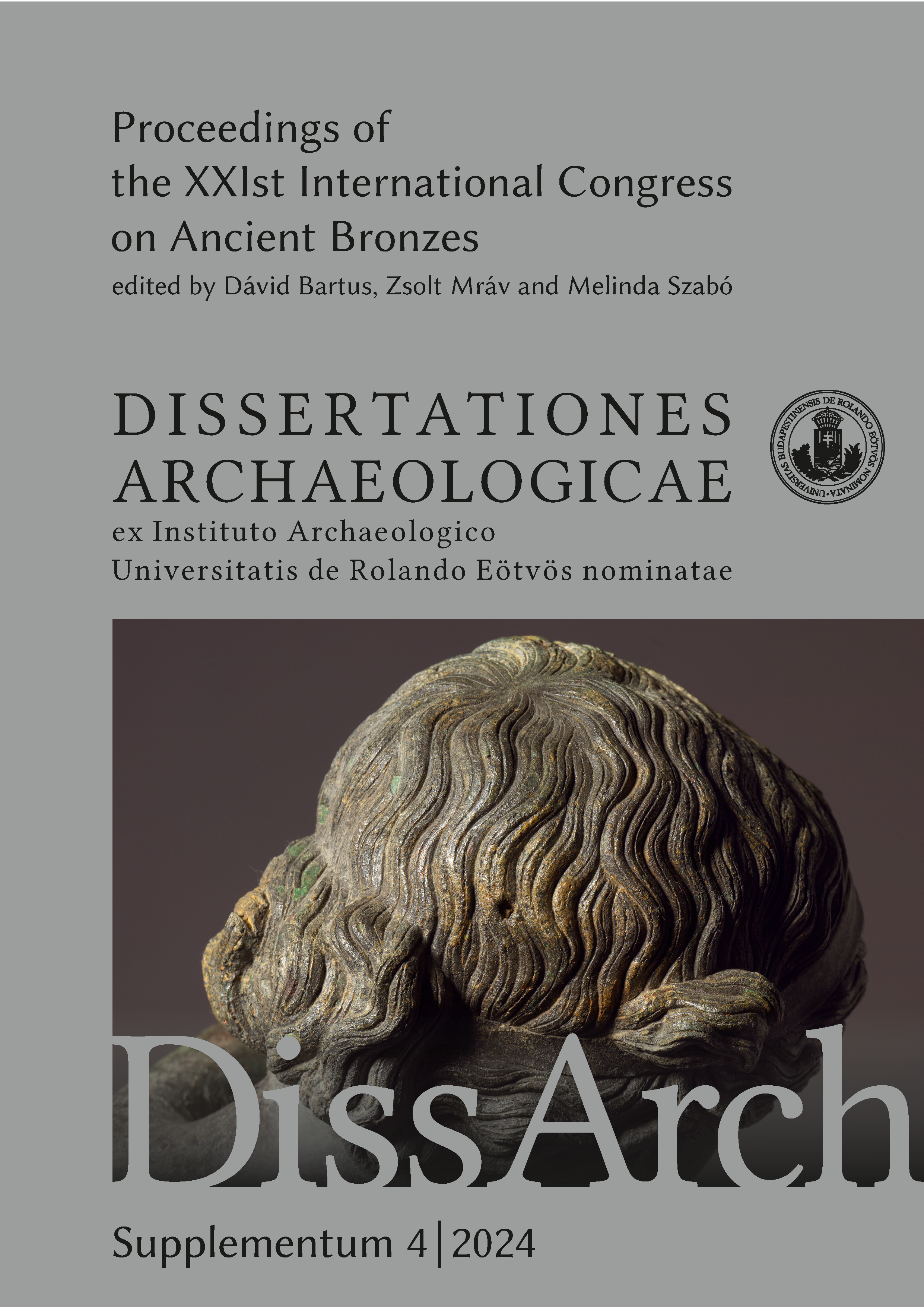Published 2024-09-30
Keywords
- wire,
- gilded wreaths,
- swaging,
- hammered,
- strip-twisted
How to Cite
Abstract
This paper discusses different techniques for making copper wire in the fourth and third centuries BCE in ancient Macedonia (Northern Greece). Wire was used to form stems on gilded wreaths, and to support berries, leaves and rosettes. Stems were made in one piece with the leaves, and are likely to have been formed in at least two ways: one involved cutting them out of sheet copper about 0.5 mm thick, which was creased and then hammered into shape; the other involves using copper rods 1mm square. Some of the square copper rods can be seen on the wreaths, and their regularity suggests they may have been formed on a swaging block. Berries were joined to the wreath circlets by round wires, formed in some cases, it is suggested, by hammering sheet metal around a central core; in other cases, these stems may have been formed by rolling a rod between stone slabs. No evidence, such as longitudinal striations, was found of drawing. Some examples of strip-twisted wire were found, but there are fewer cases of this than of wire formed by hammering. The most expensive gilded wreaths at Derveni, cist grave A, Phoinikas cist grave 5 and Sedes, sometimes had special features, such as gilded copper tubes (‘branches’) with smaller stems on either side, or square wires formed into spirals.


